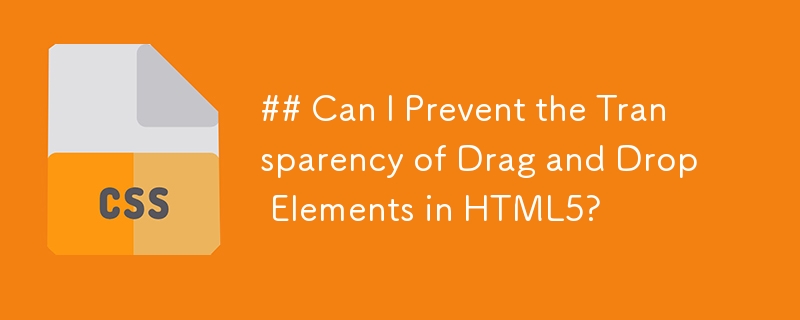Found a total of 10000 related content

H5 vs. HTML5: Clarifying the Terminology and Relationship
Article Introduction:The difference between H5 and HTML5 is: 1) HTML5 is a web page standard that defines structure and content; 2) H5 is a mobile web application based on HTML5, suitable for rapid development and marketing.
2025-05-05
comment 0
515

Understanding H5 Code: The Fundamentals of HTML5
Article Introduction:HTML5 is a key technology for building modern web pages, providing many new elements and features. 1. HTML5 introduces semantic elements such as, , etc., which enhances web page structure and SEO. 2. Support multimedia elements and embed media without plug-ins. 3. Forms enhance new input types and verification properties, simplifying the verification process. 4. Offer offline and local storage functions to improve web page performance and user experience.
2025-04-17
comment 0
638

How to Use CSS Grid Layout for Complex Page Designs?
Article Introduction:This article explains CSS Grid for complex web page layouts. It details Grid's two-dimensional approach, contrasting it with Flexbox, and covers key properties like grid-template-rows, grid-template-areas, and grid-gap. Best practices for responsiv
2025-03-10
comment 0
508

Creating Reusable Content Structures with HTML5 Template Tag
Article Introduction:HTML5 tags are used to create reusable lazy content structures. The specific steps are: 1. Define the template; 2. Obtain and clone the template content through JavaScript; 3. Insert the clone content into the page. Its features include default invisible, support for any HTML, and require JS operations. It is suitable for scenarios such as component structure, dynamic loading, and preloading resources. The scripts and styles in the template need to be specially processed and cannot be nested in specific tags.
2025-07-06
comment 0
925

What is the H5 programming language?
Article Introduction:H5 is not a standalone programming language, but a collection of HTML5, CSS3 and JavaScript for building modern web applications. 1. HTML5 defines the web page structure and content, and provides new tags and APIs. 2. CSS3 controls style and layout, and introduces new features such as animation. 3. JavaScript implements dynamic interaction and enhances functions through DOM operations and asynchronous requests.
2025-04-03
comment 0
857

The Versatility of HTML: Applications and Use Cases
Article Introduction:HTML is not only the skeleton of web pages, but is more widely used in many fields: 1. In web page development, HTML defines the page structure and combines CSS and JavaScript to achieve rich interfaces. 2. In mobile application development, HTML5 supports offline storage and geolocation functions. 3. In emails and newsletters, HTML improves the format and multimedia effects of emails. 4. In game development, HTML5's Canvas API is used to create 2D and 3D games.
2025-04-30
comment 0
1018

How is HTML5 localStorage Object Isolated?
Article Introduction:Page/Domain Isolation of HTML5 localStorage ObjectIn HTML5, the localStorage object provides persistent data storage for web applications within a browser. However, a query arises regarding its isolation and management.Isolation of localStorage Objec
2024-10-21
comment 0
631

HTML5: The Building Blocks of the Modern Web (H5)
Article Introduction:HTML5 is the latest version of the Hypertext Markup Language, standardized by W3C. HTML5 introduces new semantic tags, multimedia support and form enhancements, improving web structure, user experience and SEO effects. HTML5 introduces new semantic tags, such as, ,, etc., to make the web page structure clearer and the SEO effect better. HTML5 supports multimedia elements and no third-party plug-ins are required, improving user experience and loading speed. HTML5 enhances form functions and introduces new input types such as, etc., which improves user experience and form verification efficiency.
2025-04-21
comment 0
1030

What does H5 mean?
Article Introduction:H5 is the abbreviation of HTML5 and is the fifth version of HTML. H5 enhances the structure and semantics of web pages, and introduces new features such as video, audio, canvas drawing and geolocation APIs, making web page development richer and more efficient.
2025-04-04
comment 0
1016

What is the basic structure of an HTML page?
Article Introduction:A basic HTML page structure consists of multiple key tags to define web page content and frameworks. 1. The page starts with an HTML5 document; 2. The tag contains the sum as the root element; 3. It contains metadata such as, character encoding, viewport settings, CSS and JS introduction; 4. It contains user-visible content such as titles, paragraphs, pictures, lists, etc.; 5. HTML5 has added semantic tags such as,,,,,, and to improve structural clarity and readability. Mastering these structures helps quickly build clear and maintainable web pages.
2025-07-10
comment 0
137

HTML's Purpose: Enabling Web Browsers to Display Content
Article Introduction:The core purpose of HTML is to enable the browser to understand and display web content. 1. HTML defines the web page structure and content through tags, such as, to, etc. 2. HTML5 enhances multimedia support and introduces and tags. 3.HTML provides form elements to support user interaction. 4. Optimizing HTML code can improve web page performance, such as reducing HTTP requests and compressing HTML.
2025-05-03
comment 0
583
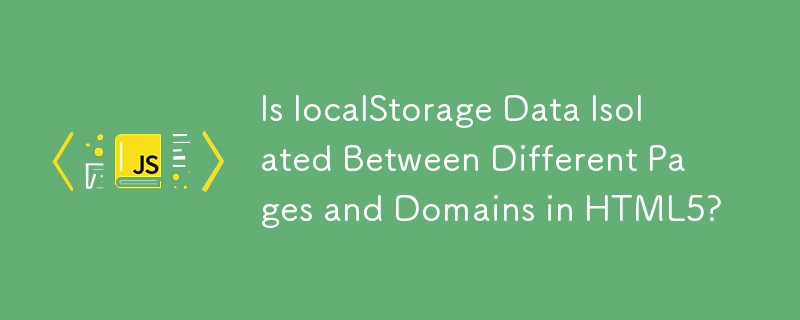
Is localStorage Data Isolated Between Different Pages and Domains in HTML5?
Article Introduction:Inter-page Isolation of localStorage in HTML5:In HTML5, the localStorage object provides a mechanism for storing data locally within a web browser. One important consideration is whether this data is isolated between different pages and domains.Answe
2024-10-21
comment 0
1089
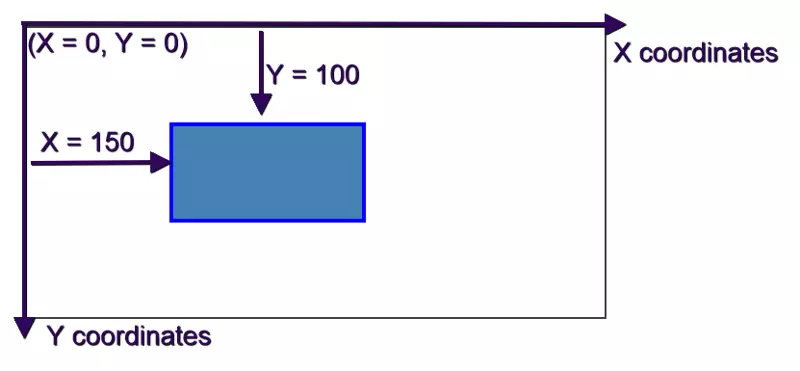
Introduction to jCanvas: jQuery Meets HTML5 Canvas
Article Introduction:HTML5 lets you draw graphics straight into your web page using the element and its related JavaScript API.
In this post, I’m going to introduce you to jCanvas, a free and open source jQuery-based library for the HTML5 Canvas API.
If you d
2025-02-18
comment 0
562

H5 Code: A Beginner's Guide to Web Structure
Article Introduction:The methods of building a website in HTML5 include: 1. Use semantic tags to define the web page structure, such as, , etc.; 2. Embed multimedia content, use and tags; 3. Apply advanced functions such as form verification and local storage. Through these steps, you can create a modern web page with clear structure and rich features.
2025-05-08
comment 0
1009

From Text to Websites: The Power of HTML
Article Introduction:HTML is a language used to build web pages, defining web page structure and content through tags and attributes. 1) HTML organizes document structure through tags, such as,. 2) The browser parses HTML to build the DOM and renders the web page. 3) New features of HTML5, such as, enhance multimedia functions. 4) Common errors include unclosed labels and unquoted attribute values. 5) Optimization suggestions include using semantic tags and reducing file size.
2025-04-13
comment 0
881
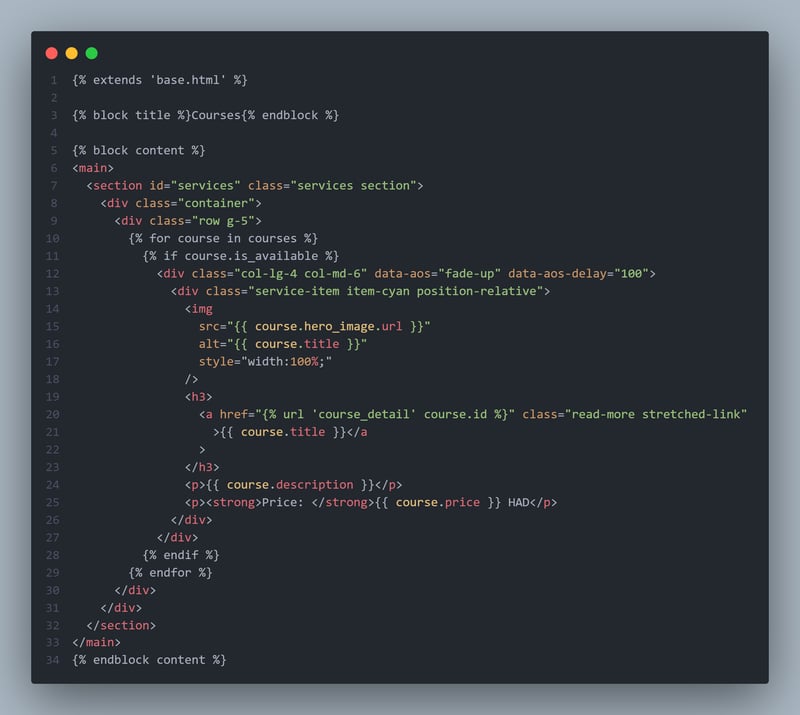
How to Create Custom Template Tags in Django?
Article Introduction:Django template tags: simplify data display and improve code reusability
In Django development, templates are used to dynamically render data into HTML pages. This article will introduce how to use Django template tags to simplify data display logic and avoid duplicating code in views.
Django template basic example
Let's say you have a simple course list HTML template:
The corresponding view code is as follows:
The view passes the course data to the template, which is ultimately displayed on the web page like this:
Question: Show total number of courses
Now, let's say you need to display the total number of courses on a web page. One way is to add calculation logic in the view:
def course_list(request):
to
2025-01-27
comment 0
790

golang template package tutorial
Article Introduction:Golang's template package is a powerful tool for handling text templates, especially suitable for generating HTML pages or configuration files. 1. The basic usage includes defining templates and passing in data to perform rendering, supporting the definition of templates through strings or files; 2. Template nesting and reusing can be used to organize and share page structures by defining basic templates and sub-templates; 3. Control structures such as if judgment and range loops can be used for dynamic content generation, and comparison operations require functional forms; 4. HTML templates (html/template) and text templates (text/template) should be selected according to their purpose. The former automatically escapes HTML special characters to prevent XSS attacks, which are suitable for web page development.
2025-07-07
comment 0
670
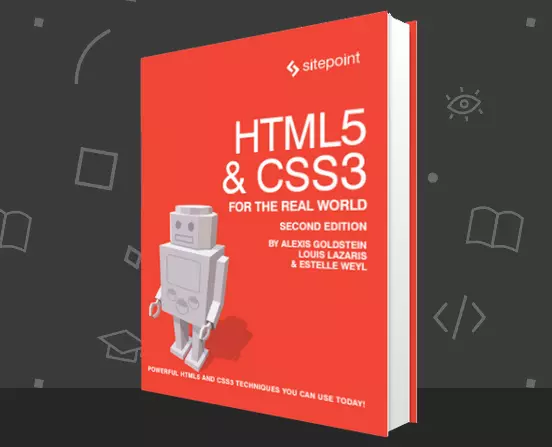
HTML5 Forms: Dependable Tools in Our Toolbox
Article Introduction:The following is excerpted from the book "HTML5 & CSS3 for the Real World, 2nd Edition" co-authored by Alexis Goldstein, Louis Lazaris and Estelle Weyl. This book is available in stores around the world, and you can also purchase the e-book version here.
We've written most of the page code and you now know almost everything about the new HTML5 elements and their semantics. But before we start designing the website's look (we're doing it in Chapter 7), we'll quickly leave the homepage of HTML5 Herald to check out the registration page. This will illustrate HTML5 in the web table
2025-02-19
comment 0
797


